Phonics Teaching Resources
Make teaching phonics easy with printable phonics worksheets, activities, games and more designed for primary teachers.
This collection of Australian curriculum-aligned teaching resources has been carefully reviewed by our expert teaching team to make sure every resource is classroom-ready — so we can make your lesson planning easier!
New to teaching phonics, or just looking for new ways to engage your students? Read on for a primer from our teacher team!
What Is Phonics?
You've likely heard the word 'phonics' thousands of times throughout your own education and maybe on one of those old as from the '90s. But what is phonics, exactly?
Phonics is technically defined as the systematic instruction of the relationships between letters and sounds in written language. But that's a mouthful, isn't it? More simply, phonics is the word we use to refer to the method of teaching reading by focusing on the relationship between written letters and the sounds they represent.
In phonics, kids learn how to decode written words by recognising the sound-symbol correspondence.
Phonics vs. Phonemic Awareness
When we start talking about letters and their sounds, we start to wander into phonemic awareness territory. So what's the difference?
The words phonics and phonemic are similar, and the two concepts are — surprise, surprise — related. But there are key differences.
Phonemic awareness is essentially the ability to identify and manipulate individual sounds — aka phonemes — in spoken language. It's those individual sounds and their correspondence to the letter symbols that can be used by kids to then decode written words.
So students learn to recognise the individual sounds of spoken language (phonemes) and how these sounds can be represented by letters (graphemes) in written language. Then they apply this knowledge to decode written words by understanding the sound-symbol correspondence.
Consider this example:
- Let's say your student can identify the separate sounds in a spoken word such as 'cat' (i.e., /k/ /a/ /t/). That's phonemic awareness.
- Now let's say you're teaching that same student that the letter 'c' represents the /k/ sound and that the letter 'a' represents the /a/ sound, and that these sounds combine to form the word 'cat.' That's phonics!
How to Teach Phonics in Primary School
OK, you probably already know that phonics is all about teaching word recognition via grapheme-phoneme associations and letter-sound correspondences.
It’s a means of teaching early readers the pieces that make up a word so they can blend them together to decode the English language as readers and writers.
But how do you teach it?
In the earliest stages, phonics instruction typically begins with teaching students the most common letter-sound relationships. You start with consonants, then move on to vowels, then consonant blends.
Students then learn to sound out words by decoding the letters and blending the sounds together to form words.

Phonics Vocabulary Terms to Remember
The English language system is one of the hardest to teach and learn, so how do you teach phonics? Let’s start with the phonics vocabulary.
- For starters, there are 26 letters that create approximately 44 phonemes, the word for the individual speech sounds that make up words. Put together, phonemes make words. OK, easy enough, right?
- Well, these phonemes can be written in more than 200 different letter combinations, known as graphemes. Graphemes can be made up of 1 letter (such as 'p' in 'pig'), 2 letters (such as 'gh' in ghost), 3 letters (such as 'igh' in night), or 4 letters (such as 'ough' in rough).
- Then there are digraphs or two letters that work together to make one sound — such as “ph” in graph. But wait, isn’t that a grapheme? Yup, a digraph is a type of grapheme.
- So is a trigraph, trigraphs, aka three letters that work together to make one sound, such as 'dge' in edge.
- And if you’re teaching phonics, you can’t forget dipthongs, the name for a sound that is formed by the combination of two vowels in a single syllable, such as 'ou' in loud.
Most students will spend foundation, year 1 and even year 2 getting a handle on all phonics elements!
- Plus Plan
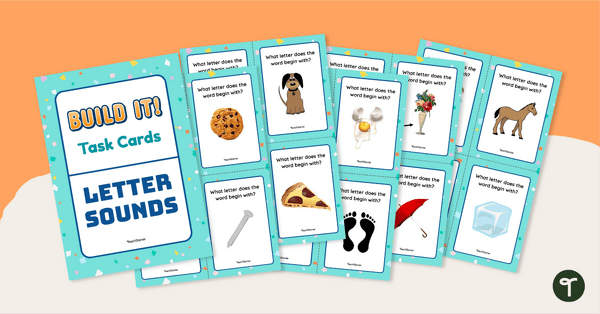
Letter Sound Knowledge Activity Cards
Practise identifying and writing the beginning sounds of words with this set of 28 task cards with your students.
- Plus Plan
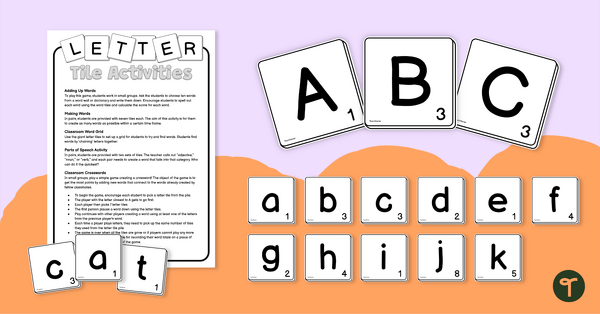
Giant Letter Tiles with Numbers
Use these giant letter tiles for a variety of vocabulary and spelling activities for your students.
- Plus Plan
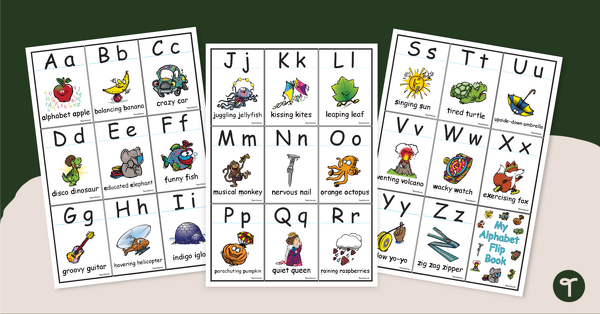
Alphabet Flashcards
Use these alphabet flashcards to help familiarise your students with the letters of the alphabet and their corresponding sounds.
- Plus Plan
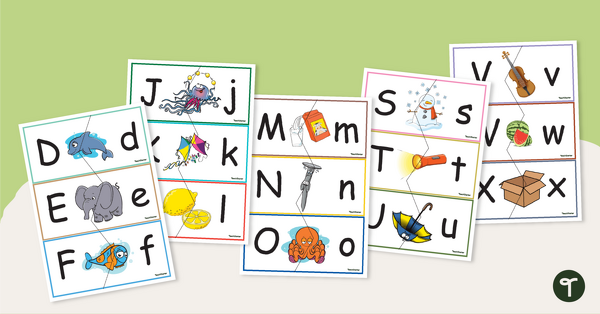
Alphabet Matching Game
Use this alphabet matching game to familiarise your students with the letters of the alphabet and their corresponding sounds.
- Plus Plan
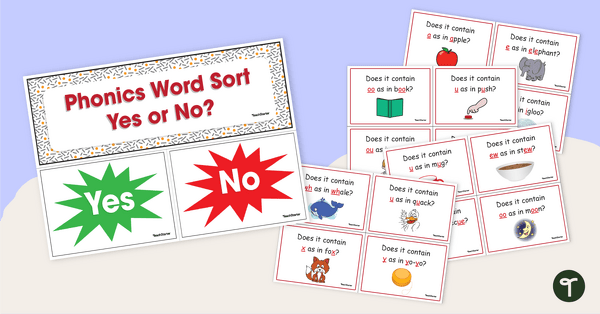
Yes or No? Phonics Sorting Activity
Use this phonics activity to help your students identify the different phonemes that make up a word.
- Plus Plan
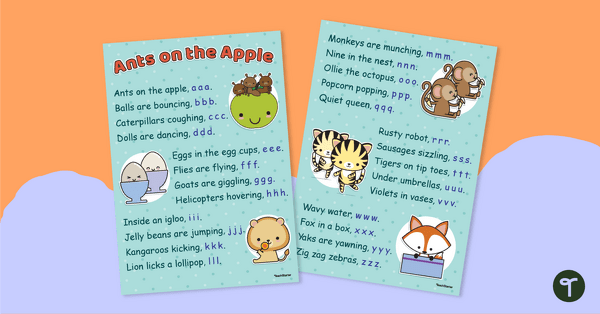
Ants on the Apple – Phonics Rhyme Posters
Use this poster featuring the phonics rhyme “Ants on the Apple” to teach your students the association between letters and their sounds.
- Plus Plan
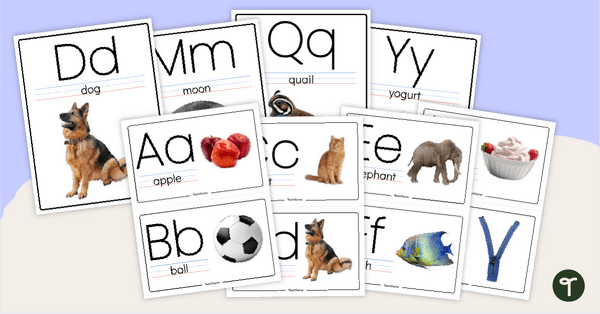
Ink-Friendly Classroom Alphabet Display
Print and hang your own classroom alphabet posters with printable upper and lowercase letter posters with real-world images.
- Plus Plan
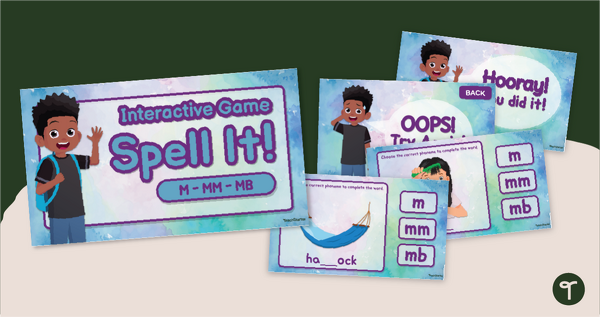
Phoneme Interactive Spelling Game - M, MM, MB
Use an interactive spelling game to help your students learn to spell words with m, mm, and mb correctly.
- Plus Plan
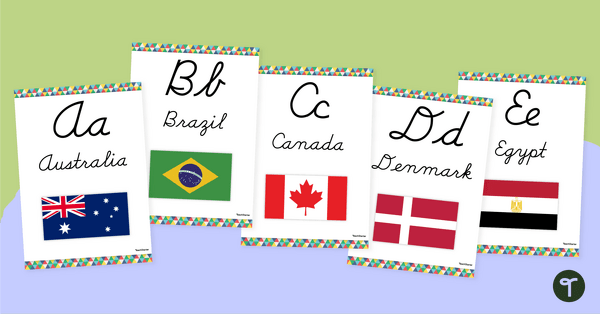
Flags of the World - Print and Cursive Alphabet Line
Display the alphabet in print or cursive with a unique Flags of the World Alphabet Line.
- Plus Plan

Vowel Teams Sorting Activity (OA, OW and OE)
Decode words with the OA, OW and OE vowel teams using 18 picture cards with sorting mats.
- Plus Plan
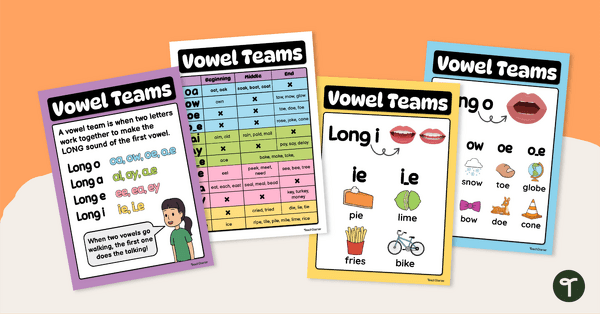
Vowel Team Digraph Poster Set
Display this poster set in your classroom when teaching children about different vowel team digraphs.
- Plus Plan
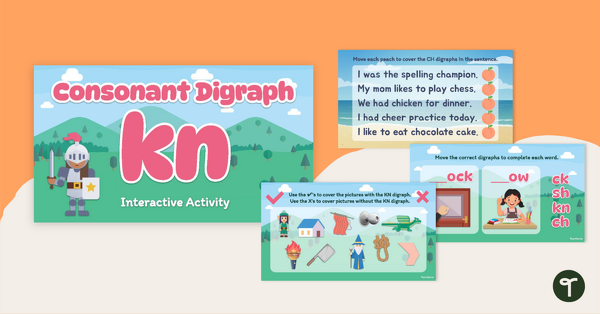
Consonant Digraph KN Interactive Activity
Engage students in practising their learning around the consonant digraph of ‘kn’ with this fun knight-themed interactive activity.
- Plus Plan
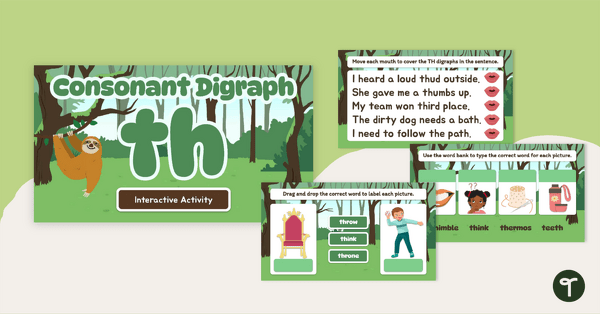
Consonant Digraph TH Interactive Activity
Engage students in practising their learning around the consonant digraph of ‘th’ with this fun sloth-themed interactive activity.
- Plus Plan
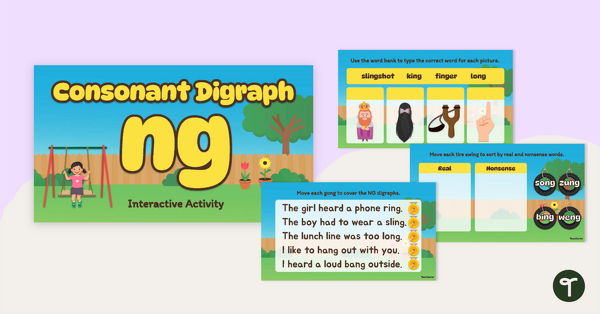
Consonant Digraph NG Interactive Activity
Engage students in practising their learning around the consonant digraph of ‘ng’ with this fun playground-themed interactive activity.
- Plus Plan
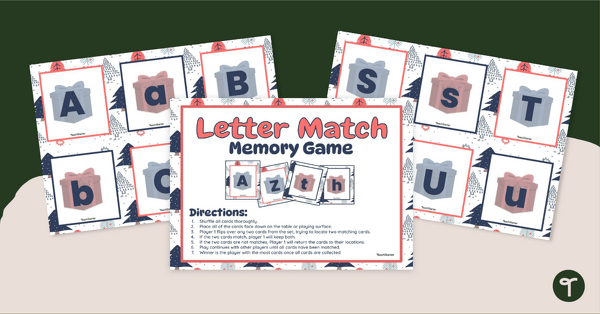
Christmas Game - Upper and Lowercase Letter Recognition
Build letter recognition skills and add Christmas spirit to your literacy centres with a Letter Matching Christmas Game.
- Plus Plan
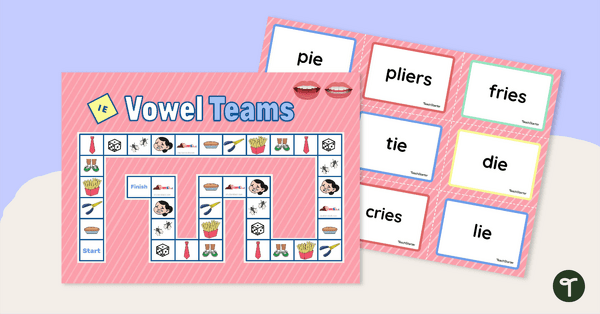
IE Vowel Team Board Game
Practise decoding words with the ie vowel team in this board game.
- Plus Plan
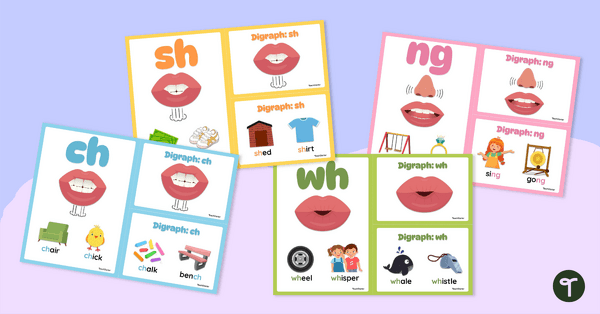
Consonant Digraph Sound Wall Cards
Guide students through phonics with these consonant digraph sound wall cards for a classroom display.
- Plus Plan
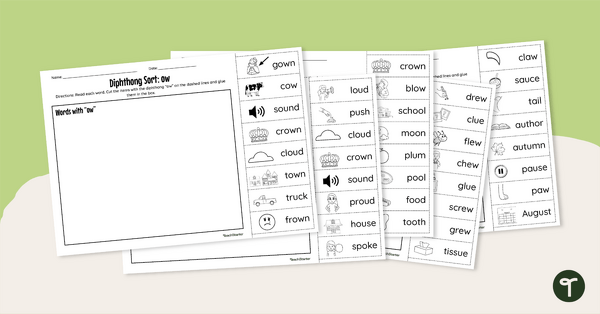
Diphthong Cut-and-Paste Worksheet
Help students practise their knowledge of different diphthongs with this set of cut-and-paste worksheets.
- Plus Plan
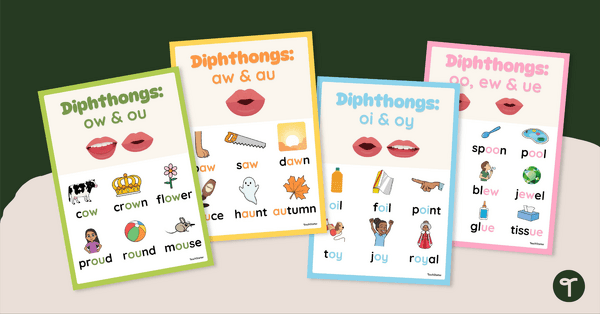
Diphthongs Classroom Posters
Display this set of posters highlighting the main diphthongs with word examples and mouth articulation images.
- Plus Plan
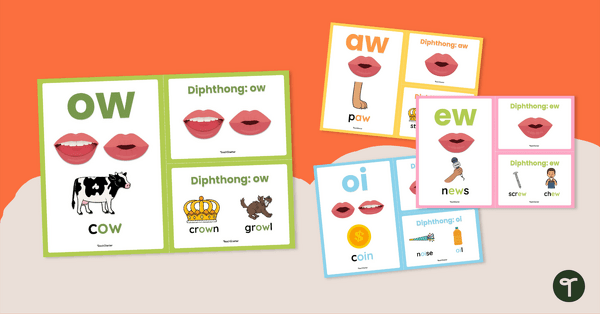
Diphthongs Sound Wall Cards
Use these diphthong cards as visuals on a sound wall or as flashcards during your phonics lessons.
- Plus Plan
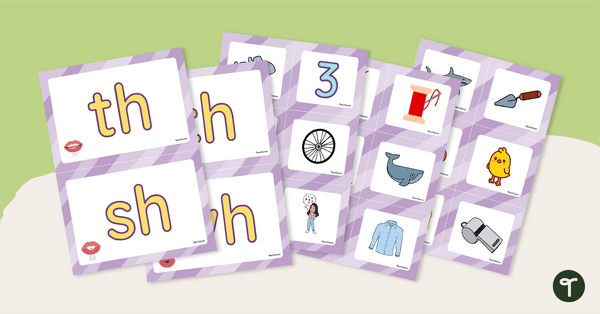
Beginning Consonant Digraphs Sorting Activity
Explore words that contain an initial consonant digraph with a set of 24 picture sorting cards.
- Plus Plan
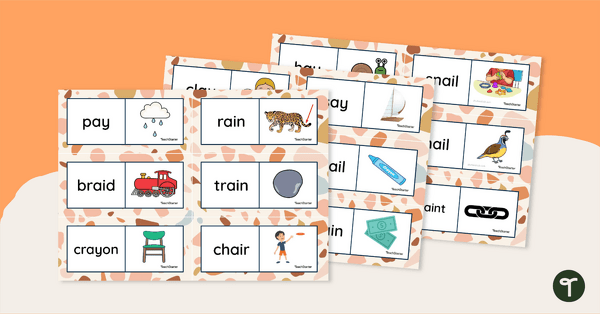
Vowel Digraph Dominoes - AI and AY
Decode words with vowel team conventions for representing long vowel sounds using this set of 26 dominoes.
- Plus Plan
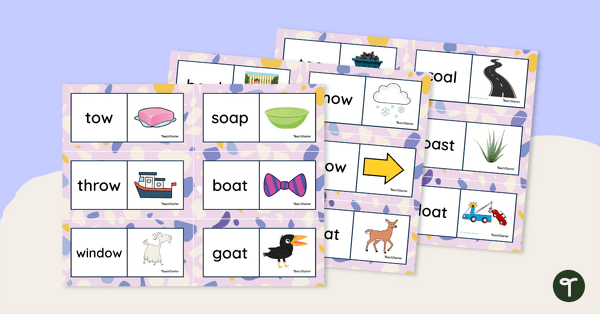
Vowel Digraph Dominoes - OA, OW, and OE
Decode words with oa, ow, and oe vowel team conventions for representing long vowel sounds using this set of 28 dominoes.
- Plus Plan
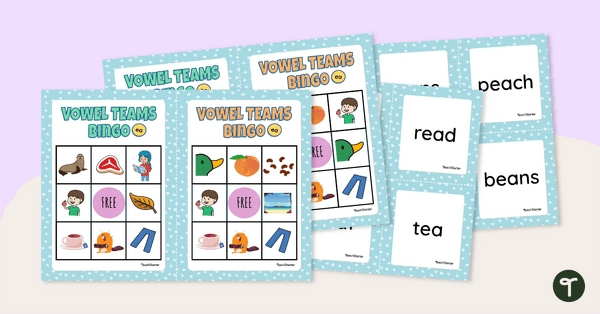
EA Vowel Digraph Bingo Game
Practise decoding words that include the EA long /e/ vowel team sound with this BINGO game for up to 20 players.
- Plus Plan
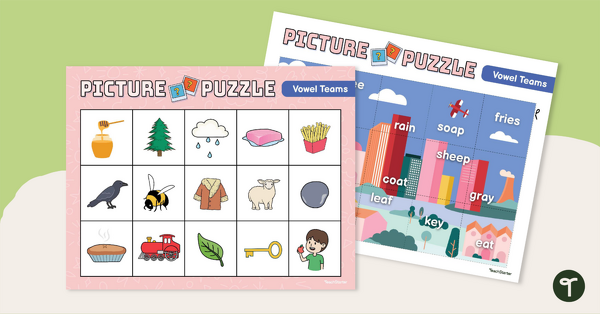
Vowel Digraphs Picture Puzzle
Practise decoding words with long vowel team conventions with this 15 piece picture puzzle.
- Plus Plan
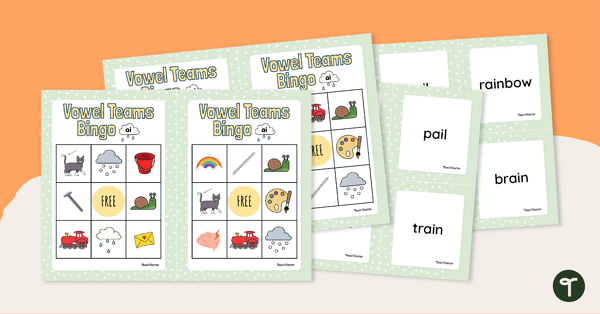
AI Diphthong Vowel Digraph Bingo
Practise decoding words that use the AI vowel team convention with this BINGO game for up to 20 players.
- Plus Plan
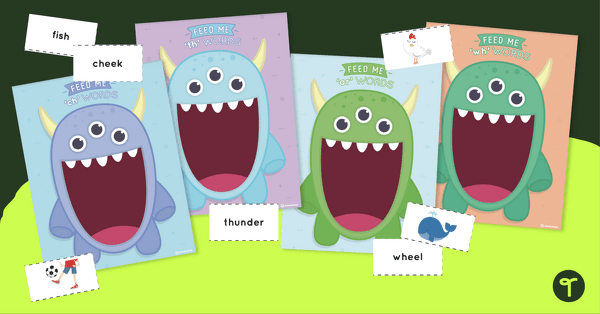
Monster Mash Grapheme Sorting Activity
Consolidate the concept of different graphemes with a printable consonant digraph activity.
- Plus Plan
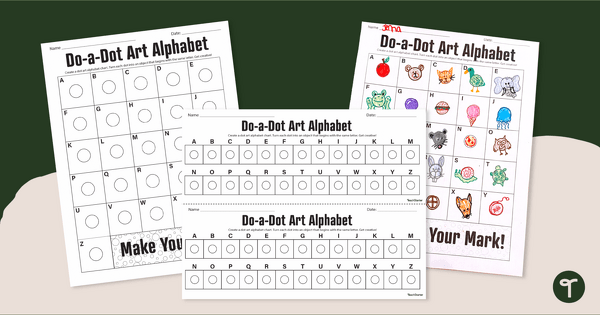
Do-a-Dot Art Alphabet Chart
Design a Dot Day Alphabet Chart with a pair of fun “Finish the Drawing” worksheets.
- Plus Plan
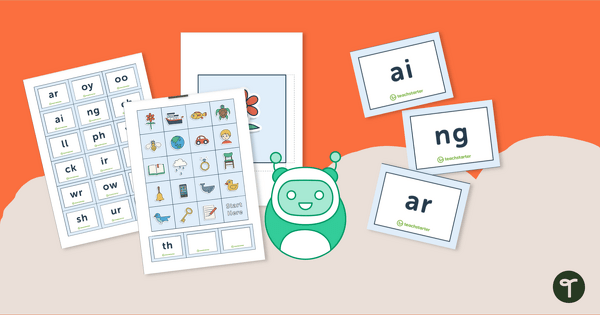
Digraph Coding Robot Mat
Practise identifying digraphs with the help of a coding robot and mat.
- Plus Plan
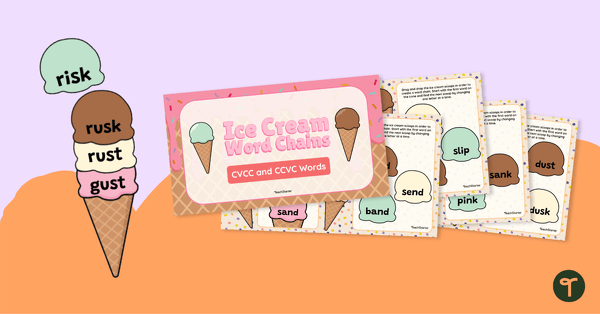
Ice Cream Word Chains - Interactive Activity
Drag and drop the ice cream scoops to make CVCC and CCVC word chains with this engaging digital activity.
- Plus Plan
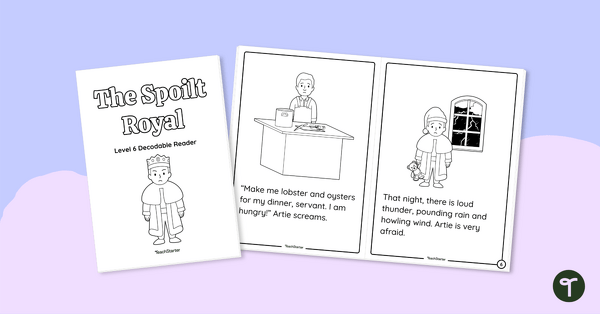
The Spoilt Royal - Decodable Reader (Level 6)
Develop confident, successful readers with this phonics-based, printable decodable book.
- Plus Plan
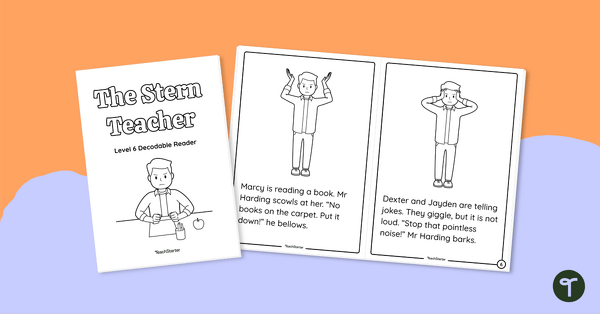
The Stern Teacher - Decodable Reader (Level 6)
Develop confident, successful readers with this phonics-based, printable decodable book.